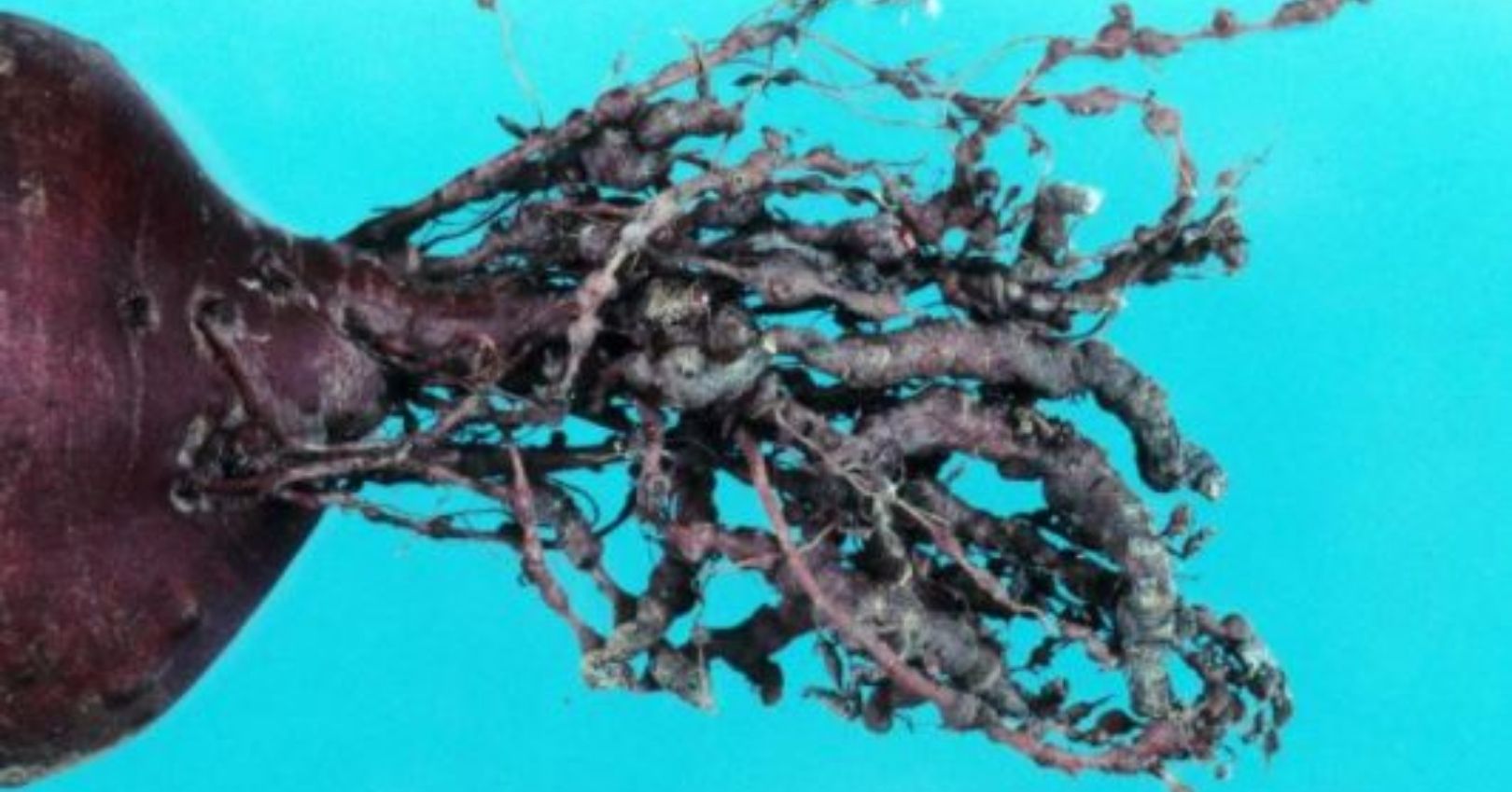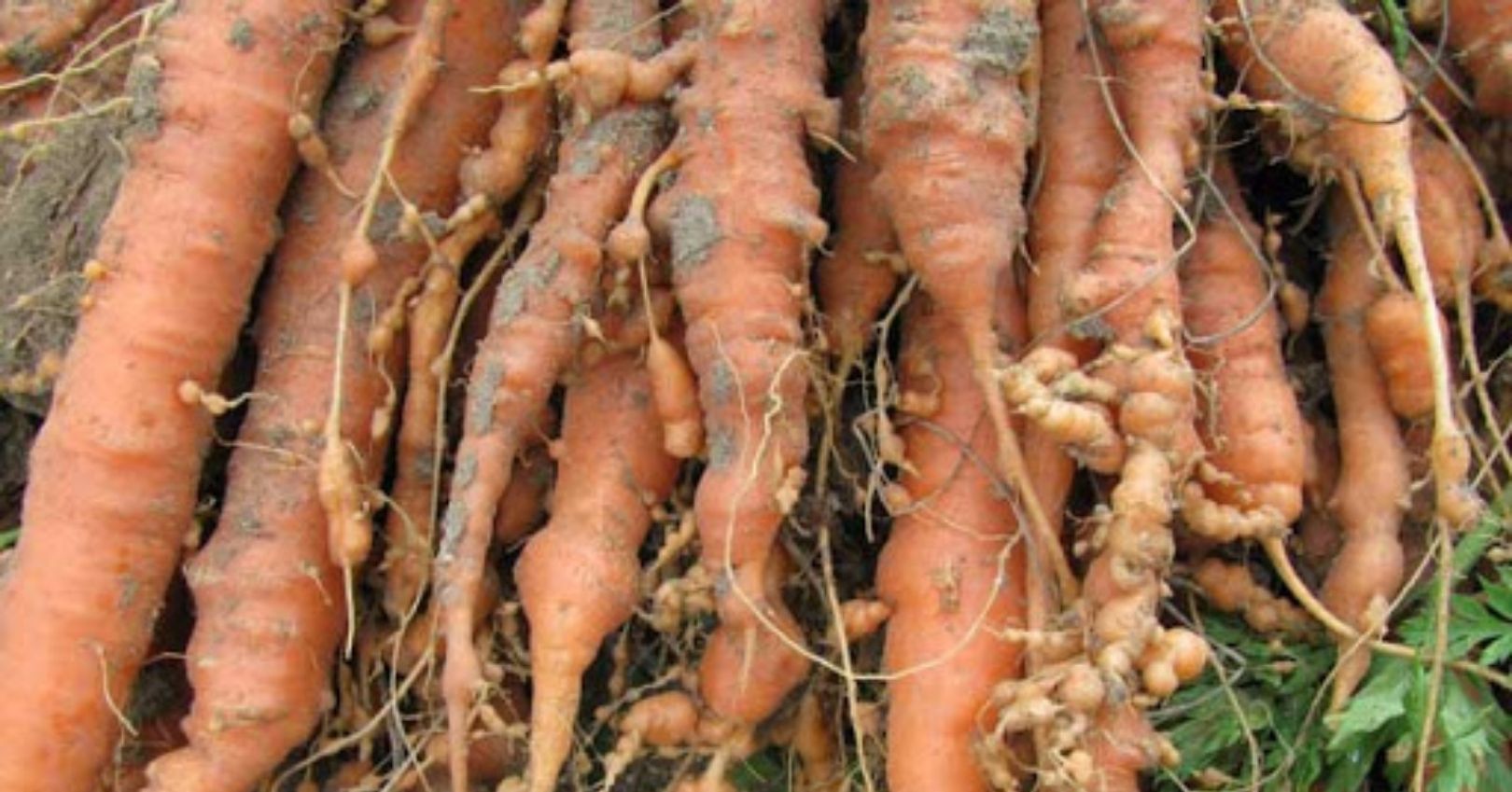Nematodes


Casual Agents
Nematodes are microscopic plant-parasitic roundworms that live in the soil and in plant tissues. Root-knot nematodes occur occasionally throughout Utah. They are a cause for concern on root vegetables and ornamental plantings. They can be a threat throughout the growing season but control measures are most effective before or shortly after planting.
Symptoms
Root-knot nematode’s parasitic activity in the carrot causes the root to become forked, distorted, or stunted. This eventually leads to stand and yield reductions. Nematodes feed by releasing chemicals that cause plant cell nuclei to divide without cell division, developing massive feeding cells. These appear as gall formations on the roots. This is a key indicator of root-knot nematode presence. Aboveground, foliage will become chlorotic and stunted. Needle and stubby root nematodes cause similar symptoms in the field.
Disease Cycle
Root-knot nematodes infect plants through the roots. Second stage juveniles (J2) who are wormlike enter the root tip. They migrate in the root until they find a suitable location to establish a feeding site where they stay for the rest of their lives. They inject hormones that increase nucleus and cell division. The increased cell division causes gall formation. The adult nematode becomes lemon-shaped and eventually breaks through the root/tuber. It produces egg masses that are released into the soil. Stubby root, lesion, and needle nematodes are free-living nematodes. They migrate in the soil and feed on roots, creating wounds that allow other pathogens to enter.
Management
- Crop rotation is ineffective due to nematodes’ wide host range.
- Cover Crops/Biofumigation. The mustard Caliente rojo can be grown as a cover crop. Incorporate 20 minutes from cutting as a biofumigant.
- Till. Till fallow areas once every 3-4 weeks during the hot, dry summer months.
- Remove all weeds. Weeds can serve as an alternate host.
- Use tolerant or resistant cultivars when available.
- Soil fumigation in commercial fields. Products may be difficult to obtain in Utah along with fumigation equipment.
- Early planting. Some species of root-knot nematodes found in southern Utah (Meloidogyne incognita and Meloidogyne arenaria) are unable to infect roots at soil temperatures below 50-64°F. Consider planting root crops when the temperature is below this level.

